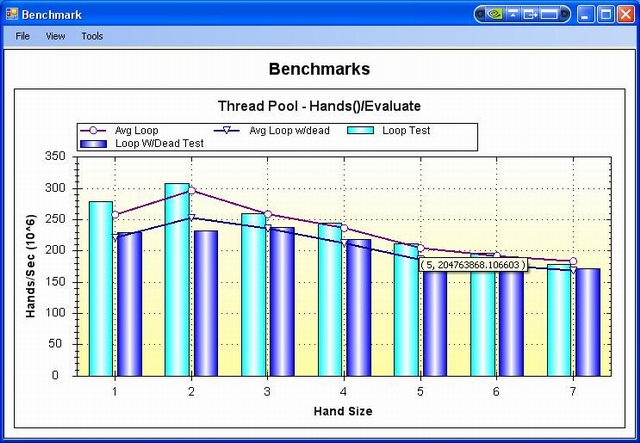Enjoy the best online casino games, regardless of where you are! StarGames is constantly innovating and re-imagining the cutting edge of online gaming, creating exciting games that can be enjoyed on your mobile device without a loss in quality and more flexibility for you. 
- C-span
- C-diff Bacteria Infection
- C Spire
- Texas Holdem Hands Chart
- C To F
- Texas Holdem Starting Hand Percentages
- C-reactive Protein
In telecommunications, the carrier-to-noise ratio, often written CNR or C/N, is the signal-to-noise ratio (SNR) of a modulated signal. The term is used to distinguish the CNR of the radio frequency passband signal from the SNR of an analog base band message signal after demodulation, for example an audio frequency analog message signal. If this distinction is not necessary, the term SNR is often used instead of CNR, with the same definition.
The Celsius scale, also known as the centigrade scale, is a temperature scale used by the International System of Units (SI).As an SI derived unit, it is used worldwide.In the United States, the Bahamas, Belize, the Cayman Islands and Liberia however, Fahrenheit remains the preferred scale for everyday temperature measurement. The degree Celsius (symbol: °C) can refer to a specific. Dec 01, 2005 A C# native, fast Texas Holdem Hand Evaluator. When evaluating the win/split% using the 'multiOddsGrid.UserControl1', it will calculate the percentages in about 1 second for my pocket cards, but when it is asked to evaluate my pocket cards plus 3 flop cards, the result takes about 4-5 seconds. Hand Evaluators The most critical subroutine needed for poker AI is a Hand Evaluator. A Hand Evaluator takes a poker hand and maps it to a unique integer rank such that any hand of equal rank is a tie, and any hand of lesser rank loses. A hand evaluator may also classify the hand into a category (a Full House, Tens over Aces). C - Strings - Strings are actually one-dimensional array of characters terminated by a null character ' 0'. Thus a null-terminated string contains the characters that compris. Jun 07, 2007 Download source - 1.34 MB; Introduction. In December 2005, I published 'Fast, Texas Holdem Hand Evaluation and Analysis' which was my first Texas Holdem Analysis article. Since then, I've done a lot of enhancements and extensions to the code. I've also had several folks more skilled in poker analysis offer their advice. Aug 17, 2011 Question regarding use of C# hand evaluator library Hi All, I wanted input from the more experienced programmers out there on a performance issue I am encountering with C# libraries equivalent to poker-eval written by Keith Rule.
Digitally modulated signals (e.g. QAM or PSK) are basically made of two CW carriers (the I and Q components, which are out-of-phase carriers). In fact, the information (bits or symbols) is carried by given combinations of phase and/or amplitude of the I and Q components. It is for this reason that, in the context of digital modulations, digitally modulated signals are usually referred to as carriers. Therefore, the term carrier-to-noise-ratio (CNR), instead of signal-to-noise-ratio (SNR) is preferred to express the signal quality when the signal has been digitally modulated.
C-span
High C/N ratios provide good quality of reception, for example low bit error rate (BER) of a digital message signal, or high SNR of an analog message signal.
Definition[edit]
The carrier-to-noise ratio is defined as the ratio of the received modulated carrier signal powerC to the received noise power N after the receiver filters:
- .
When both carrier and noise are measured across the same impedance, this ratio can equivalently be given as:
- ,
C-diff Bacteria Infection
where and are the root mean square (RMS) voltage levels of the carrier signal and noise respectively.
C/N ratios are often specified in decibels (dB):
or in term of voltage:
Measurements and estimation[edit]
The C/N ratio is measured in a manner similar to the way the signal-to-noise ratio (S/N) is measured, and both specifications give an indication of the quality of a communications channel.
In the famous Shannon–Hartley theorem, the C/N ratio is equivalent to the S/N ratio. The C/N ratio resembles the carrier-to-interference ratio (C/I, CIR), and the carrier-to-noise-and-interference ratio, C/(N+I) or CNIR.
C/N estimators are needed to optimize the receiver performance.[1] Typically, it is easier to measure the total power than the ratio of signal power to noise power (or noise power spectral density), and that is why CNR estimation techniques are timely and important.
Carrier-to-noise density ratio[edit]
In satellite communications, carrier-to-noise-density ratio (C/N0) is the ratio of the carrierpowerC to the noise power densityN0, expressed in dB-Hz.When considering only the receiver as a source of noise, it is called carrier-to-receiver-noise-density ratio.
It determines whether a receiver can lock on to the carrier and if the information encoded in the signal can be retrieved, given the amount of noise present in the received signal. The carrier-to-receiver noise density ratio is usually expressed in dBHz.
The noise power density, N0=kT, is the receiver noise power per hertz, which can be written in terms of the Boltzmann constantk (in joules per kelvin) and the noise temperatureT (in kelvins).
See also[edit]
C Spire
- C/I: carrier-to-interference ratio
- Eb/N0 (energy per bit relative to noise power spectral density)
- Es/N0 (energy per symbol relative to noise power spectral density)
- Signal-to-interference ratio (SIR or S/I)
- Signal-to-noise ratio (SNR or S/N)
- SINAD (ratio of signal-plus-noise-plus-distortion to noise-plus-distortion)
Texas Holdem Hands Chart
References[edit]

- ^Islam, A. K. M. Najmul; Lohan, E. S.; Renfors, M. (Mar 2008). Moment based CNR estimators for BOC/BPSK modulated signal for Galileo/GPS. pp. 129–136.
C To F
This article incorporates public domain material from the General Services Administration document 'Federal Standard 1037C' (in support of MIL-STD-188).
Further reading[edit]

Texas Holdem Starting Hand Percentages
- Digital Transmission: Carrier-to-Noise Ratio, Signal-to-Noise Ratio, and Modulation Error Ratio at the Wayback Machine (archived 2016-03-04)